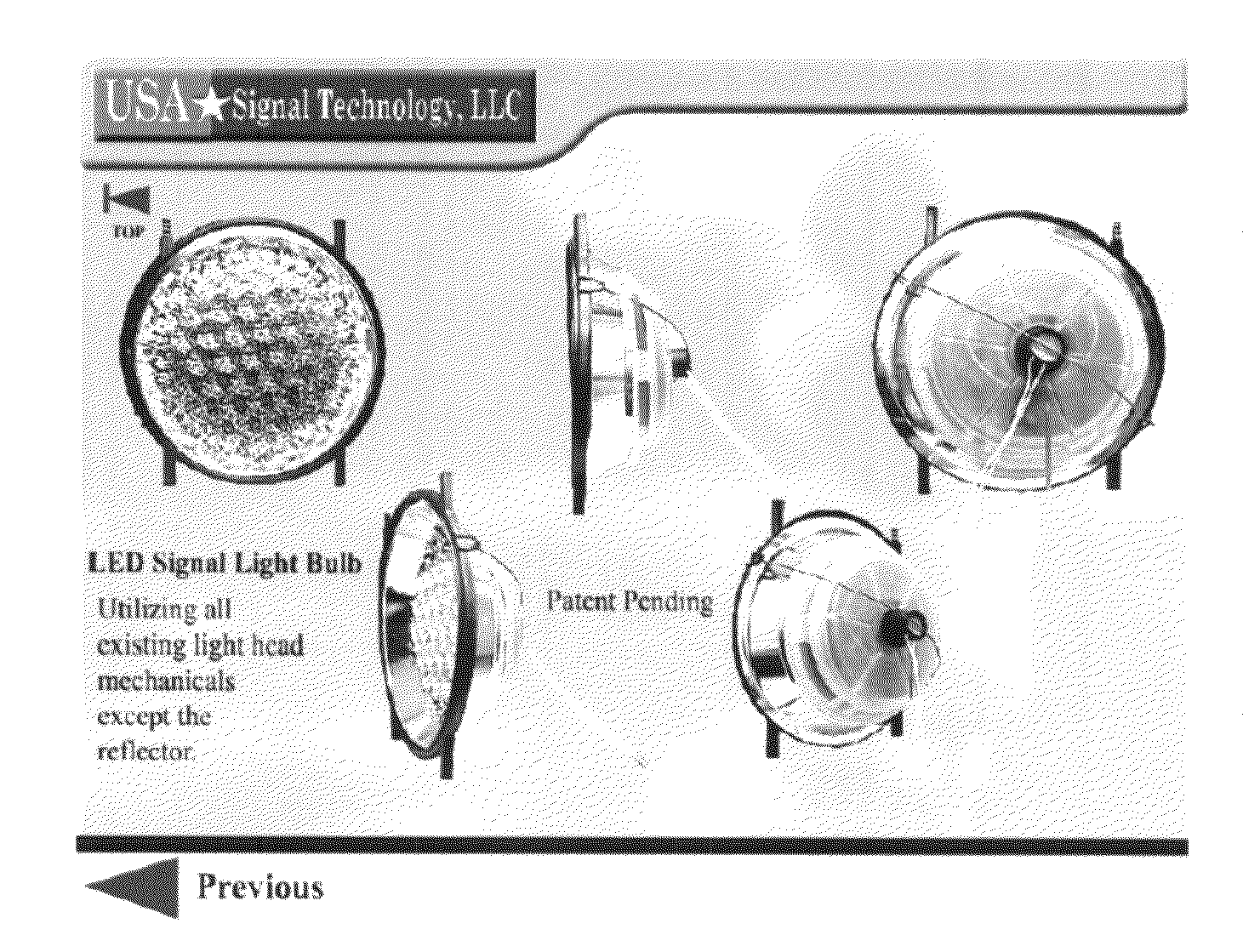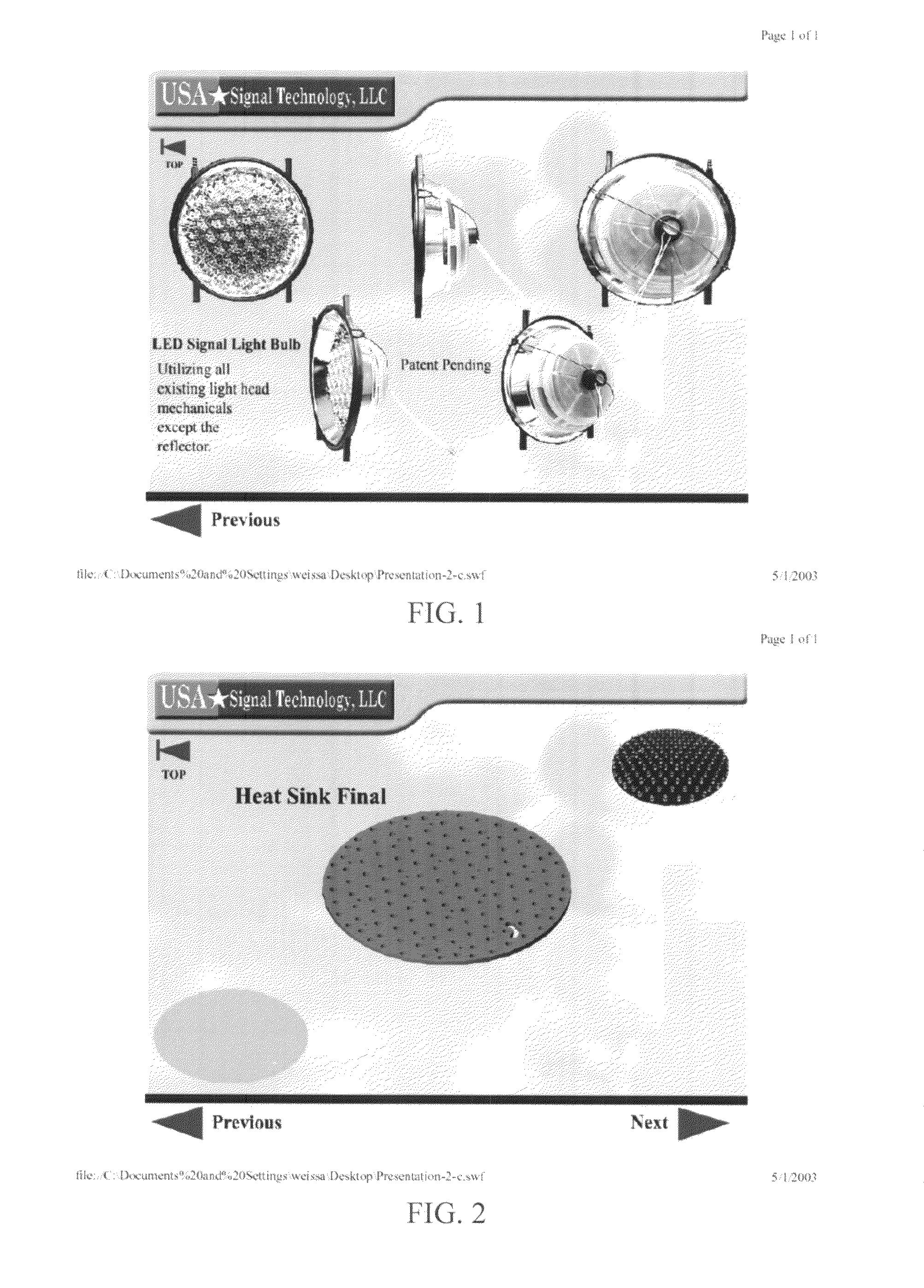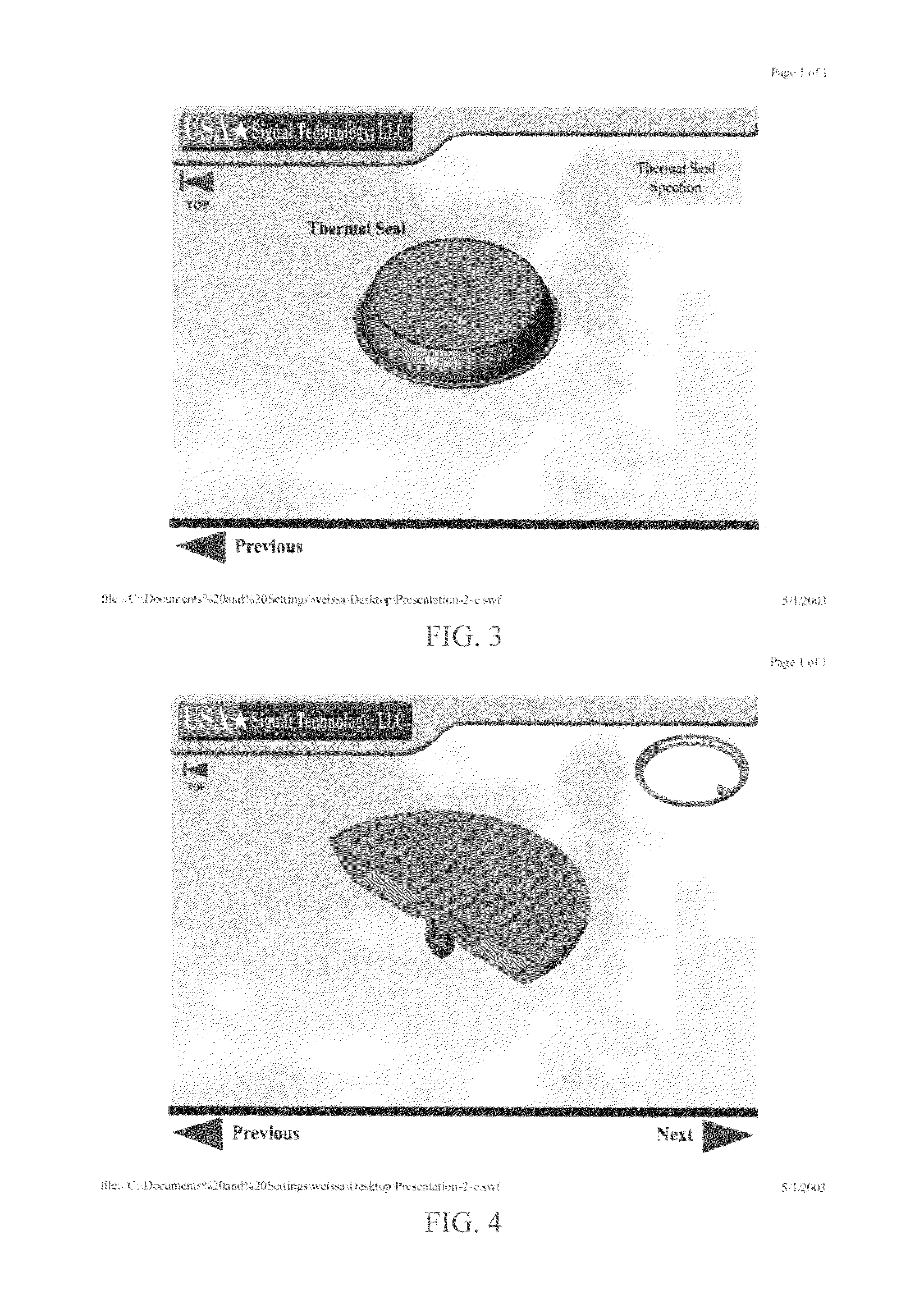Light emitting diode traffic control device
a technology of traffic control and light-emitting diodes, which is applied in the direction of identification means, lighting and heating equipment, instruments, etc., can solve the problems of high cost of metropolitan and other political jurisdictions, insufficient light output, and permanent and unchanging natur
- Summary
- Abstract
- Description
- Claims
- Application Information
AI Technical Summary
Benefits of technology
Problems solved by technology
Method used
Image
Examples
Embodiment Construction
[0058]It will be understood by those skilled in the art that the present invention can be implemented in a number of different ways, within the scope of this application. A presently preferred embodiment of the invention will now be described below.
Overview
[0059]FIG. 1 shows a mostly assembled light emitting diode (LED) signal lamp from several angles, in accordance with an embodiment of the present invention. FIG. 1 shows a power supply assembly (having wires extending therefrom), an LED assembly (having a lens cover), and a chimney frame (having obvious apertures) mechanically connecting the two assemblies while leaving a chimney space ventilated between the heat sinks of the power supply assembly and the LED assembly so that the chimney space remains in fluid communication with the environment of the signal lamp. The apertures of the chimney frame can be best seen in the top center signal bulb and the bottom right signal bulb of FIG. 1.
[0060]FIGS. 27–29 show a schematic side view...
PUM
 Login to View More
Login to View More Abstract
Description
Claims
Application Information
 Login to View More
Login to View More - R&D
- Intellectual Property
- Life Sciences
- Materials
- Tech Scout
- Unparalleled Data Quality
- Higher Quality Content
- 60% Fewer Hallucinations
Browse by: Latest US Patents, China's latest patents, Technical Efficacy Thesaurus, Application Domain, Technology Topic, Popular Technical Reports.
© 2025 PatSnap. All rights reserved.Legal|Privacy policy|Modern Slavery Act Transparency Statement|Sitemap|About US| Contact US: help@patsnap.com



